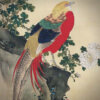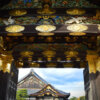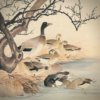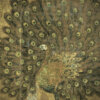Matsunaga Kōgyoku: The Shōwa Period Painter Who Continued to Draw Traditional Japanese Painting
Tsuru no Mai (The Dance of Cranes)
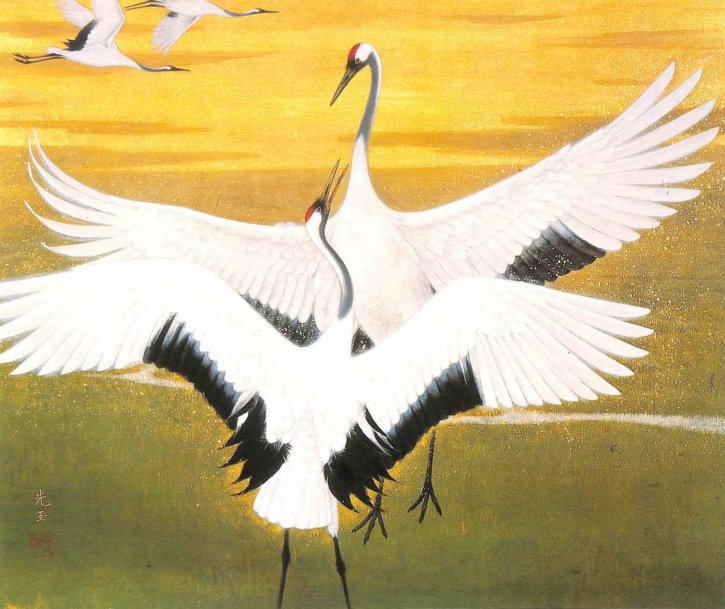
The appearance of the two cranes is dramatic. It looks as if the love scene of a young beautiful couple was drawn in cranes. Since cranes are noble, the scene is finished in a much more magnificent stage than drawing the performance of human beings.
White feathers cover the painting, and it’s a drastic composition. It quickly captures the moment of movement. Although the painting is not so big, it is a work that mysteriously feels spacious. He did not handle the gold gorgeously, but it is a great supporting role for cranes. The painter’s solid brush strokes can be fully seen.
Shirokujaku (White Peacocks)
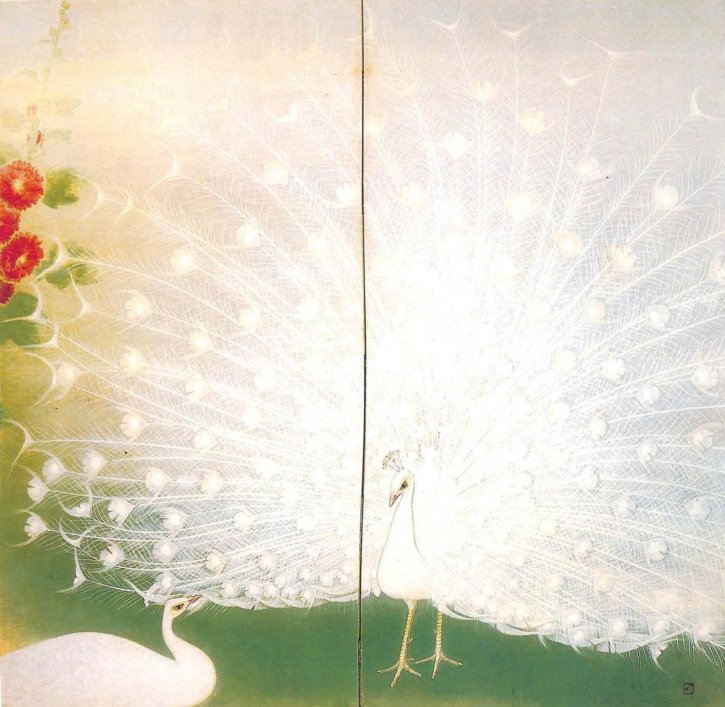
The painting fully conveys the noble appearance of the white peacock. The painter expresses the wings spread out in full screen size with delicate brush strokes. It seems that the tips of the feathers are smooth, and even the soft touch of the feather can be felt by the viewer. A female peacock, fascinated by her stunning bravery, sends her enthusiastic gaze to her courtesan. The faces and arrangement of the two peacocks are more than just a Kachō-ga (painting of flowers and birds), and they are likely to become a drama. The white and green color scheme is also elegant. And the color tone of the hollyhock, which looks like a little red on the left edge of the painting, adds flowers to this drama.
The painter, Matsunaga Kōgyoku, was born in 1902 in Shizuoka Prefecture. He moved to Tōkyō in 1922 and studied under Ikegami Shūho. After that, he exhibited at the Shinkō Bijutsuin, was recommended as a member of the Shinkō Bijutsuin in 1951, left the institute in 1959, and the following year he formed Shinsei Bijutsukai with his comrades. He worked energetically until his later years with an expression method that steadily focused on the basics and traditions of Japanese painting. He died in 1987 at the age of 85.
Rusō (The Flow of the River)
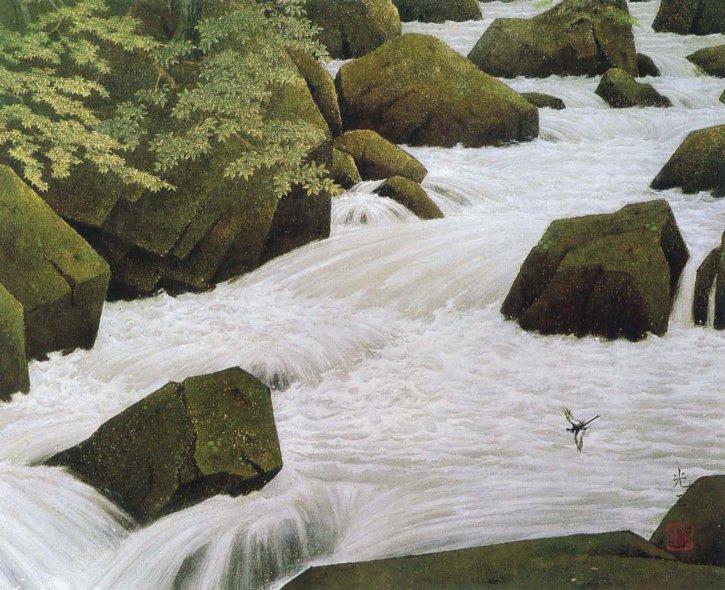
Matsunaga Kōgyoku liked Oirase (Mountain Stream in Aomori Prefecture) and produced numerous works with the motif of the mountain streams. He says, “I felt in this mountain stream the immutability of various acts that are close to how life changes without stopping.” This painting is also one of them, and it seems that you can hear the sound of a clear stream flowing vigorously from the painting. Passing between rocks, sometimes shaving rocks, sometimes merging, water runs freely like a living thing. Nature’s activities since ancient times will continue endlessly in the future. The painter captured the moment of nature on the painting. However, the flow of water does not stop even inside the painting, and the water that flows from the back of the screen flows through the screen, then out of the painting. The tone of the two colors of white and green is refreshing again.

